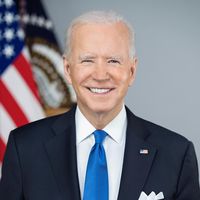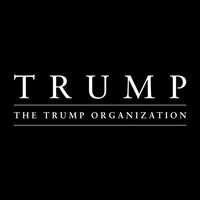Trump’s Tariff Threats: A New Chapter in U.S.-Russia Relations
March 31, 2025, 4:39 am

Location: United States, District of Columbia, Washington
Employees: 10001+
Founded date: 2000

Location: United States, District of Columbia, Washington
Employees: 1001-5000
Total raised: $500K
In the ever-shifting landscape of international politics, the recent threats from U.S. President Donald Trump to impose tariffs on Russian oil have sent ripples through the global market. The backdrop is a tense standoff over Ukraine, where the stakes are high and the players are many. Trump’s words, laden with frustration, signal a potential pivot in U.S. foreign policy, one that could reshape alliances and economic ties.
Trump’s anger is palpable. He’s “pissed off” at Russian President Vladimir Putin, and he’s not afraid to show it. The catalyst? Putin’s dismissive comments about Ukrainian President Volodymyr Zelenskiy. In a recent NBC News interview, Trump declared that if Russia obstructs efforts to broker peace in Ukraine, he would impose secondary tariffs of 25% to 50% on buyers of Russian oil. This isn’t just a threat; it’s a declaration of economic warfare.
The proposed tariffs are not merely numbers on a spreadsheet. They represent a strategic maneuver aimed at crippling Russia’s oil revenue, a lifeline for its economy. Trump’s stance is clear: if Moscow continues its aggression, the U.S. will respond with economic might. The message is loud and clear: the U.S. will not sit idly by while Russia undermines peace efforts.
But the implications of such tariffs extend beyond Russia. Countries like China and India, which have increased their purchases of Russian oil, could feel the heat. Trump’s tariffs would effectively block these nations from accessing the U.S. market if they continue to buy Russian oil. It’s a high-stakes game of chess, where every move counts.
The U.S. has not imported Russian crude oil since April 2022, but the threat of tariffs could reshape global oil dynamics. India, for instance, has emerged as a significant buyer of Russian crude, accounting for about 35% of its total imports in 2024. If Trump follows through on his threats, the economic repercussions could be severe, not just for Russia but for its trading partners as well.
The geopolitical landscape is further complicated by Trump’s ongoing relationship with Putin. Despite his recent outburst, Trump has maintained a conciliatory tone towards Russia. He has expressed a desire to negotiate a ceasefire in Ukraine, a task that has proven elusive. The juxtaposition of his threats and his willingness to engage in dialogue highlights the complexity of U.S.-Russia relations.
In the midst of this turmoil, Finland’s President Alexander Stubb has urged Trump to set a deadline for a ceasefire. The suggestion of April 20 as a target date underscores the urgency of the situation. Time is of the essence, and the world watches as the clock ticks down.
Trump’s tariff threats are not isolated incidents. They are part of a broader strategy that includes measures against countries like Venezuela. The administration’s approach is aggressive, with tariffs on steel, aluminum, and cars already in place. The question remains: how effective will these tariffs be in achieving their intended goals?
Critics argue that Trump’s methods are haphazard. The logistics of tracing oil purchases and enforcing tariffs pose significant challenges. The complexity of global oil markets means that the U.S. may struggle to implement these measures effectively. Moreover, the potential for retaliation from affected countries looms large.
As Trump prepares to speak with Putin, the world holds its breath. Will this conversation lead to a breakthrough in negotiations, or will it deepen the divide? The stakes are high, and the consequences of failure could be dire.
Meanwhile, Putin’s response to Trump’s threats has been measured. He has dismissed the notion that U.S. interest in Greenland is a trivial matter, emphasizing the historical context of American ambitions in the Arctic. His comments serve as a reminder that geopolitical interests extend beyond immediate conflicts. The Arctic is a battleground for resources, and both nations are vying for control.
Putin’s remarks also highlight the shifting dynamics within NATO. The inclusion of Finland and Sweden into the alliance has altered the security landscape in Northern Europe. Russia’s military modernization efforts are a direct response to these developments. The Kremlin is keenly aware of the growing NATO presence in the Arctic and is prepared to counter any perceived threats.
In this intricate web of diplomacy, the stakes are not just economic; they are existential. The potential for conflict looms large, and the world is on edge. Trump’s tariff threats are a bold move, but they come with risks. The path forward is fraught with uncertainty, and the outcome remains to be seen.
As the situation unfolds, one thing is clear: the interplay between economic sanctions and diplomatic negotiations will shape the future of U.S.-Russia relations. The world watches, waiting for the next move in this high-stakes game. Will peace prevail, or will the drums of war grow louder? Only time will tell.
Trump’s anger is palpable. He’s “pissed off” at Russian President Vladimir Putin, and he’s not afraid to show it. The catalyst? Putin’s dismissive comments about Ukrainian President Volodymyr Zelenskiy. In a recent NBC News interview, Trump declared that if Russia obstructs efforts to broker peace in Ukraine, he would impose secondary tariffs of 25% to 50% on buyers of Russian oil. This isn’t just a threat; it’s a declaration of economic warfare.
The proposed tariffs are not merely numbers on a spreadsheet. They represent a strategic maneuver aimed at crippling Russia’s oil revenue, a lifeline for its economy. Trump’s stance is clear: if Moscow continues its aggression, the U.S. will respond with economic might. The message is loud and clear: the U.S. will not sit idly by while Russia undermines peace efforts.
But the implications of such tariffs extend beyond Russia. Countries like China and India, which have increased their purchases of Russian oil, could feel the heat. Trump’s tariffs would effectively block these nations from accessing the U.S. market if they continue to buy Russian oil. It’s a high-stakes game of chess, where every move counts.
The U.S. has not imported Russian crude oil since April 2022, but the threat of tariffs could reshape global oil dynamics. India, for instance, has emerged as a significant buyer of Russian crude, accounting for about 35% of its total imports in 2024. If Trump follows through on his threats, the economic repercussions could be severe, not just for Russia but for its trading partners as well.
The geopolitical landscape is further complicated by Trump’s ongoing relationship with Putin. Despite his recent outburst, Trump has maintained a conciliatory tone towards Russia. He has expressed a desire to negotiate a ceasefire in Ukraine, a task that has proven elusive. The juxtaposition of his threats and his willingness to engage in dialogue highlights the complexity of U.S.-Russia relations.
In the midst of this turmoil, Finland’s President Alexander Stubb has urged Trump to set a deadline for a ceasefire. The suggestion of April 20 as a target date underscores the urgency of the situation. Time is of the essence, and the world watches as the clock ticks down.
Trump’s tariff threats are not isolated incidents. They are part of a broader strategy that includes measures against countries like Venezuela. The administration’s approach is aggressive, with tariffs on steel, aluminum, and cars already in place. The question remains: how effective will these tariffs be in achieving their intended goals?
Critics argue that Trump’s methods are haphazard. The logistics of tracing oil purchases and enforcing tariffs pose significant challenges. The complexity of global oil markets means that the U.S. may struggle to implement these measures effectively. Moreover, the potential for retaliation from affected countries looms large.
As Trump prepares to speak with Putin, the world holds its breath. Will this conversation lead to a breakthrough in negotiations, or will it deepen the divide? The stakes are high, and the consequences of failure could be dire.
Meanwhile, Putin’s response to Trump’s threats has been measured. He has dismissed the notion that U.S. interest in Greenland is a trivial matter, emphasizing the historical context of American ambitions in the Arctic. His comments serve as a reminder that geopolitical interests extend beyond immediate conflicts. The Arctic is a battleground for resources, and both nations are vying for control.
Putin’s remarks also highlight the shifting dynamics within NATO. The inclusion of Finland and Sweden into the alliance has altered the security landscape in Northern Europe. Russia’s military modernization efforts are a direct response to these developments. The Kremlin is keenly aware of the growing NATO presence in the Arctic and is prepared to counter any perceived threats.
In this intricate web of diplomacy, the stakes are not just economic; they are existential. The potential for conflict looms large, and the world is on edge. Trump’s tariff threats are a bold move, but they come with risks. The path forward is fraught with uncertainty, and the outcome remains to be seen.
As the situation unfolds, one thing is clear: the interplay between economic sanctions and diplomatic negotiations will shape the future of U.S.-Russia relations. The world watches, waiting for the next move in this high-stakes game. Will peace prevail, or will the drums of war grow louder? Only time will tell.

